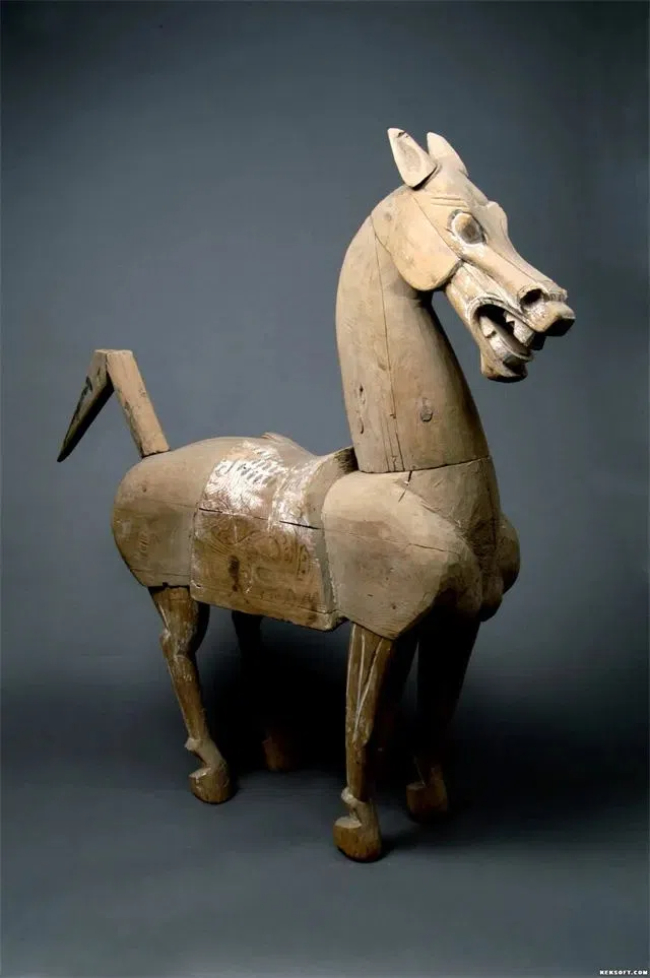Galloping horse treading on a flying swallow: A legend of the Hexi Corridor

Miniature wooden models of farm tools and livestock, funerary objects excavated from Hexi Corridor. [Photo provided to gogansu.com]
Both museums showcase a wealth of Silk Road artifacts: Sogdian figurines, grapevine-patterned silverware, and textile samples-all testaments to the vibrant cultural exchanges along the ancient trade routes.
The bronze horse was discovered in the Leitai Han Tomb in Wuwei, which contained an impressive array of funerary objects—39 horses, 45 figures, and 14 chariots. The tomb chamber, 4.5 meters high, has stood for millennia thanks to its ingenious bracket arch. Additionally, a bronze lamp inside was designed to consume oxygen, creating a natural seal to preserve its contents. The tomb is believed to belong to a Han dynasty general and his wife. However, only part of the general's leg bone was found, possibly returned after the general fell in battle. The tomb's name, "Leitai", may derive from a thunder god temple built atop it in Ming Dynasty (1368-1644). As a guide noted, "The accumulation of history never ends."
-
As AI encounters Dunhuang's art, the ancient caisson ceiling bridges centuries to the present.
View all stories

 Gansu thrives from green development
Gansu thrives from green development  >
>